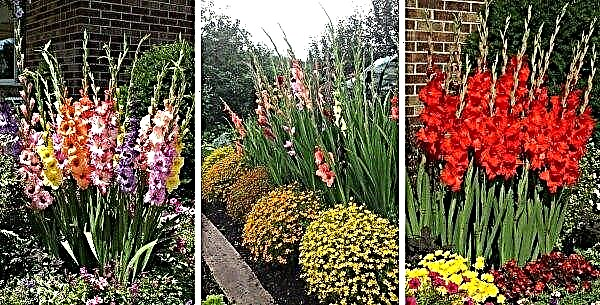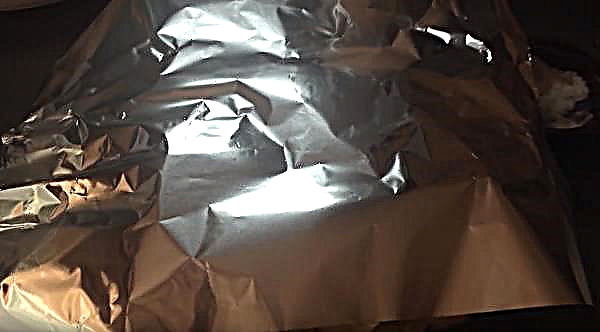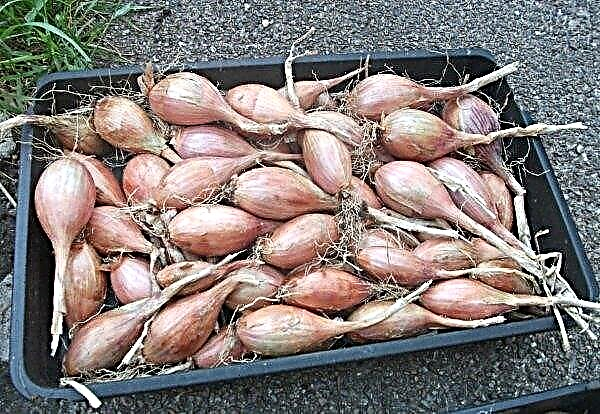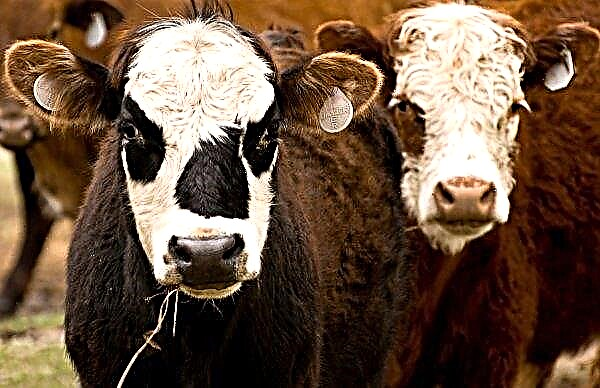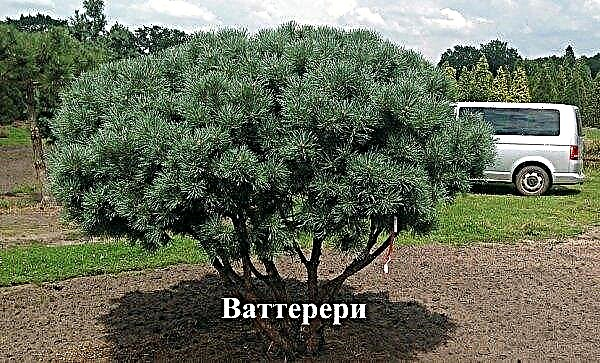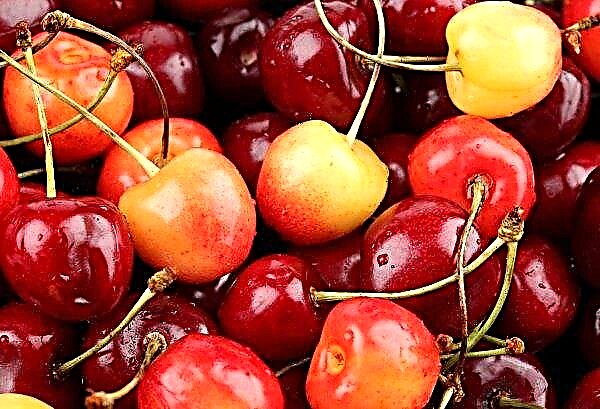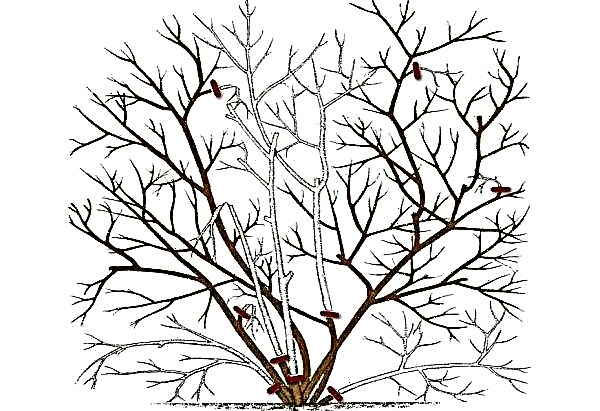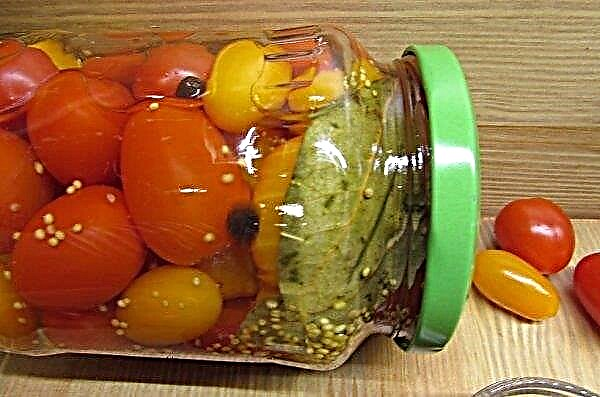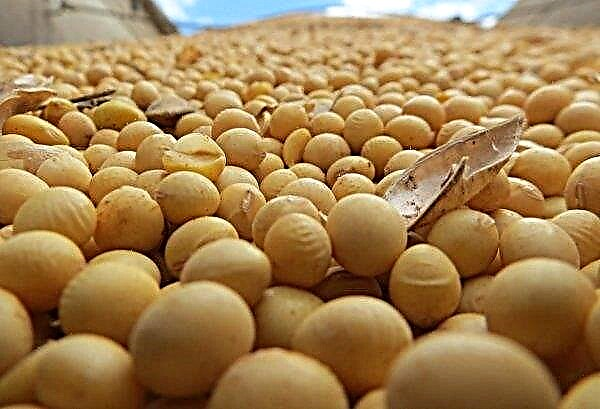Shrub hedge is a convenient and popular technique in landscape design. Most often, evergreens such as juniper are used for this purpose.
Hedge Features
Coniferous crops are centenarians, which means that the fence will "stand" for many years.
Such a hedge has other advantages:
- site restriction on the boundary;
- multi-level tyn is a great idea for dividing a garden into zones;
- a green background will shade flowering plants in season and decorate the garden in autumn;
- coniferous plants disinfect and purify the air.

Juniper absorbs carbon dioxide and other toxic substances from the atmosphere. It releases phytoncides and esters into the air, which have a healing effect on the human respiratory system.
Important! When thinking of a hedgehog in your area, you should know that the culture is a carrier of rust. Neighborhood with such a "fence" is dangerous for fruit trees.
Among the disadvantages of green fencing, one can note the slow growth of the culture, as well as the susceptibility to needles burning in some species. But patience, good care and preventive measures will give an excellent result.

Juniper varieties and species
The genus has 75 species.
Given the number of representatives, it is easy to guess that culture is spread over a vast territory:
- Asia;
- Africa;
- North and South America
- Europe;
- Russia;
- Arctic.
Several species are adapted for growing in our latitudes. Each of them is divided into varieties, so the choice among gardeners is quite wide.
Juniper rock
As the name implies, in nature the plant is distributed in mountainous areas. A shrub or tree can grow on poor and dense soils. The height of the adult specimen is 10-15 m. Vertically directed shoots form a narrow pyramidal crown. Branches grow from the very base of the trunk, covering it tightly. Rocky juniper needles are usually green with a bluish tint, prickly.
Popular varieties:
- Colorado green. By the age of 10 it grows to 3 m in height and 1 m in width. A crown in the shape of a pyramid, green needles;
- Greenspire. Growing up, it resembles a narrow column, the needles are green;
- Dew drop. The adult plant is 2.5 m, the diameter of the cone-shaped bush is 1 m. The needles are gray-green in color;
- Gray gleam. The shape of the bush is a cone, diameter 0.7, height 2 m, maximum height 4.5 m. Needles - silver-gray;
- Erecta glauca. Pyramidal crown 1.3 m wide, 3 m high, needles - steel tide.
Video: Planting Blue Arrow Rocky Juniper Along the Fence
Common juniper
The species is most common in the European and western parts of Russia, as well as in Siberia.
A large shrub or tree, up to 10 m tall, is distinguished by a variety of crown shapes:
- columnar;
- wide-spreading;
- weeping;
- pyramidal;
- creeping.
Did you know? Juniper, which is used in the production of a strong alcoholic drink, gives the coniferous aroma and aftertaste to the famous strong drink gin.
Breeders bred varieties of common juniper unpretentious to weather conditions and soils that do not require special care.
Among these plants:
- Green carpet. A short, creeping bush with horizontal shoots. The adult specimen grows up to 30 cm, in a circle up to 2 m. Scaly needles of bright green tone;

- Gold con. The variety comes from Germany, the crown is a narrow column or an elongated pyramid, height up to 3 m, girth - 0.6 m. The needles change color throughout the year: in spring - yellowish, in summer - green, in winter - with a cream tint;

- Sentinel. The tree is 1.5 m tall, a pyramidal crown with a diameter of 30 cm. There are columnar forms. The needles with small needles are painted in green with a slight bluish tinge.
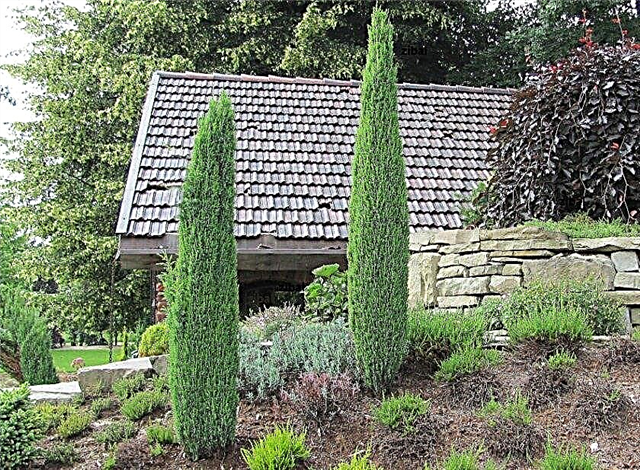
Blue juniper
Plants with blue needles are especially appreciated by gardeners and designers. Unusual color gives a shrub or tree a velvety. There is no species with this name, but each kind of culture has representatives with a blue tint of needles. The most beautiful of them:
Did you know? Juniper branches are used as a disinfectant for wooden containers in which pickling and salting are done.
- Moonglow (rocky). The bush is round in shape, which becomes pyramidal with age. Maximum parameters: height 6 m, circumference 2.5 m. Young needles with silver tint, last year’s bright blue;
- Skyrocket (rocky). Column-shaped plant 3 m tall, 0.7 m in diameter. Tightly sprouting shoots grow upward. Needles - scaly, small, blue with a bluish tint;
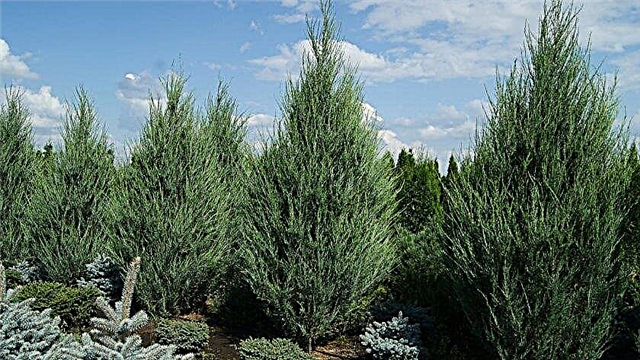
- Prince of Wales (horizontal or open). Creeping shrub up to 30 cm tall. Needles - blue, with a brown tint on the tips;

- Blue carpet (scaly). A bush with a flat crown grows no higher than 30 cm, in diameter up to 1.5 m. The needles are gray-blue;
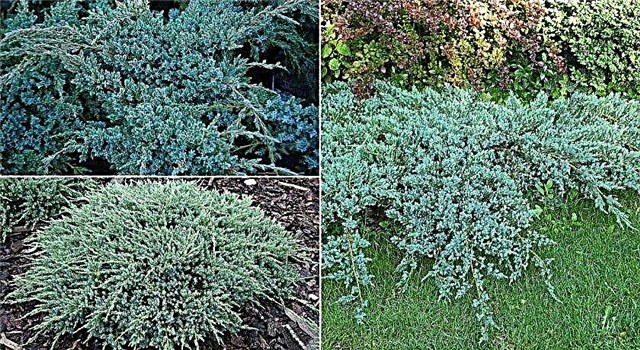
- Tamariscipolia (Cossack). A wide (up to 2 m) bush with branches located at an acute angle. Needles - prickly, blue with a silver coating;

- Rockery jam (Cossack). Spreading crown reaches 5 m, bush height 50 cm. The needles are bright, green-blue.
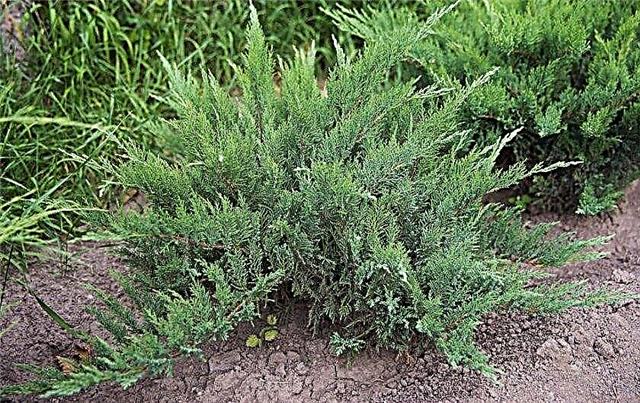
What type and grade is best for hedges
It is better to look for a variety suitable for a live fence among the species of ordinary and rocky juniper. They are familiar to our climate, winter-hardy, resistant to diseases and pests.
Rocky motley develops well in the central and southern regions Moonglow variegate. Green needles with a cream tint tend to freeze out in harsh winters. The bush tolerates a haircut, has an average need for watering, a light haircut. The maximum height of an adult plant is 3 m.
Important! Evergreens are well adapted to frost, but snow accumulating on the branches can break them off. During heavy snowfalls, plants should be regularly cleaned.
It is used on shaded areas, in various design ideas:
- English garden;
- rock garden;
- flower bed;
- hedge and border.

Slow growing variety Meyer It tolerates even very severe winters. In a lighted area, it is better to shade it from solar activity. By ten years, the columnar bush reaches 10 m, the diameter of the crown is 60 cm.

Another representative of the species Ordinary variety Suetsika. The plant is frost-resistant, loves the sun. In the shade, the crown becomes rare, friable. The culture grows up to 2.5 m, diameter - 80 cm. The shape of the crown is columnar, the needles are dark green with a gray tint. Of Sueciki, hedges are often formed on the edge of crumbling areas prone to soil erosion. Culture has the ability to strengthen the soil.

For middle latitudes, Virgin, Cossack, scaly and Chinese types of juniper are ideal. These crops perfectly tolerate sudden changes in temperature, high humidity. Varieties do not rot, are resistant to diseases and insects.
Bright representatives:
- Chinese variety Keteleri belong to fast-growing plants. The annual growth of shoots is up to 25 cm. The crown is dense, shoots grow vertically, forming a slender narrow column. The needles are green-blue, sharp at the ends;

- Arcadia (Cossack). Spreading crown reaches 2 m in diameter. Raised branches create a lace effect. Needles light green, small needles. Plant height - up to 50 cm;

- Blue (Virginia). A tree in the form of a narrow column with a sharp top. Often planted specimens form a solid green wall, covering the garden from prying eyes. Bright blue needles - scaly and soft;
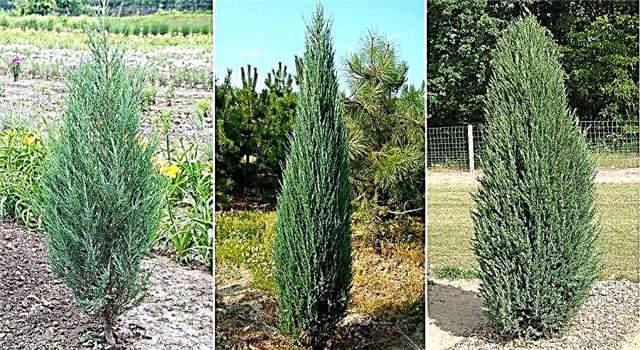
- Hetz - A hybrid of Cossack and Chinese junipers. It is characterized by rapid growth - up to 30 cm per year. An adult plant is 2 m tall and 3 m in diameter. Crohn - sprawling, loose, with gray-green needles;

- Scaly grade Dream joy with an unusual crown shape - a pillow with rounded edges. It is formed by branches that are directed evenly in different directions. The shoots are slightly bent, and the ends droop. The height of the bush is 60 cm, the diameter is 1.2 m. The decorative needles in the depths of the bush are dark green and almost yellow at the ends of the branches.

A green fence from coniferous culture will brighten up any site, many varieties are used to strengthen the soil in the garden. Juniper is one of the plants that do not need to pay much attention to care.














